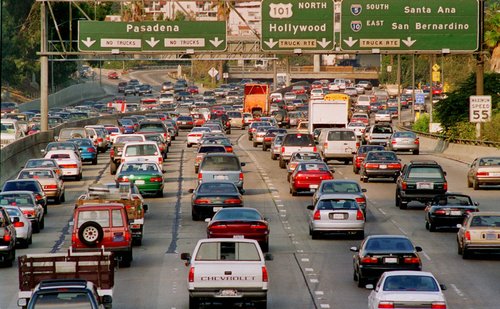Hello everyone! Welcome to our blog on international city reports. We chose to report on Singapore. In the coming few days we will be sharing various transportation aspects, policies, issues, problems and their solutions adopted by the Singapore city. Please feel free to start/participate in the discussion on the various topics mentioned above.
Transportation plays a very important role in the urbanization of any city. An efficient and effective transportation system is vital for economic growth and the quality of life. Economic growth creates the opportunities of personal transportation more accessible in turn increasing the load on the infrastructure demanding more effective management of the transportation system. Not addressing this issue can harm the economic growth of the city. Singapore has and probably is still going through rapid urbanization and is trying to deal with it as innovatively and logically as possible.
Singapore, officially the Republic of Singapore is located in south-east Asia. It is a small country with geographical area around 274 square miles, slightly more than 3.5 times the size of Washington, DC. Singapore accommodates a population of around 5 million making it one of the densely populated cities in the world. After adapting independent rule in 1965, Singapore began its transition towards urbanization.
During this transition the problems faced by Singapore were: serious congestion, poor traffic management, lack of driving skills, poor infrastructure, inadequate and inefficient public transportation system and lack of transportation planning. These problems are commonly faced by any developing cities. The initial approach to resolve the traffic problem was increasing the size of the roads/ number of lanes. However with increasing economic and population growth, increasing number of lanes would not have accommodated the projected volume of traffic. Availability of the geographical area was one of the biggest limitations. In given restraints it was important to make efficient public transport along with controlling number of privately owned vehicles on the road.
Transportation within Singapore is mainly land based which includes rail, bus and taxi. Singapore transportation is managed by Land Transport Authority (LTA). LTA was formed in 1995 as a result of merging four different public transportation agencies namely: Registry of Vehicles, Mass Rapid Transit Corporation, Roads & Transportation Division of the Public Works Department of Singapore and Land Transport Division of the then-Ministry of Communications. The aim of LTA was to establish a sustainable land transport system, which included:
1. Developing road network to include maximized capacity: Presently 12% of the land area is occupied by road; as an option Singapore government is considering possibility of underground transportation considering scarcity of the land area. Thompson line, 30km underground train is expected to complete in 2021.
2. Improving quality and efficiency of existing transportation modes (i.e. rail and bus).
3. Managing car population and demand of road usage to reduce the congestion: This is controlled by implementing various schemes such as Vehicle Quota System (VQS), Electronic Road Pricing (ERP), Certificate of Entitlement (COE) which makes owing a vehicle difficult and costly, and this approach has worked. Since the implementation of VQS the growth of vehicle population has reduced from 3% (2009) to 1% in 2012.
4. And finally minimize the need of travel by incorporating transportation in land use planning.
Since opting for independent rule in 1952, Singapore has come a long way in terms of economic growth. One of the side effects of the economic growth which can occur on transportation was understood instead of ignoring and innovative actions are taken to deal with them. The role of government in this transformation is certainly pivotal, followed by public participation. The policies opted by the government are modern and bold and helping the city to maintain its transportation health.
For this blog following references were referred:
1. http://www.lta.gov.sg/content/ltaweb/en/roads-and-motoring/owning-a-vehicle/vehicle-quota-system.html
2. http://www.lta.gov.sg/content/ltaweb/en/public-transport/projects/thomson-line.html
3. A Case Study on Urban Transportation Development and Management in Singapore, Lim Lan Yuan School of Building and Real Estate Management National University of Singapore
4. Development of Singapore’s Rapid Transit System and the Environment, Tai Chong Chew and Chong Kheng Chua; Railways and The Environment (Part 2)
Posted by Asawari Kulkarni , Ahmed Tashkandi

No comments:
Post a Comment
Note: Only a member of this blog may post a comment.